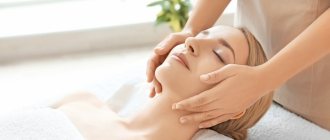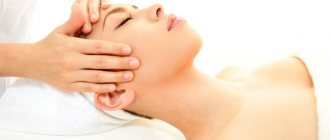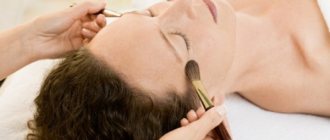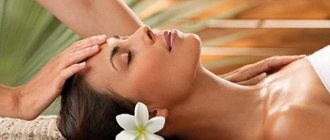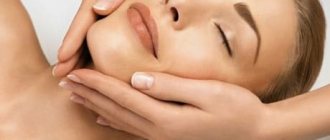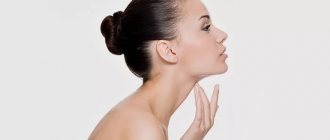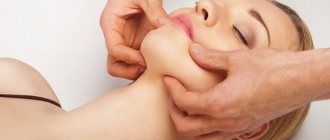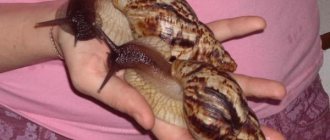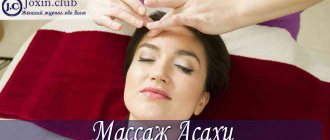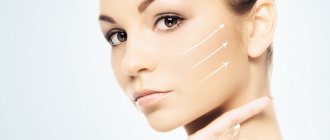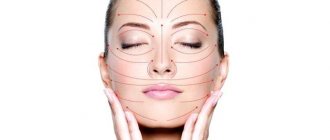Basic principles
Classical massage originated in the nineteenth century; its basic principles were developed by Russian clinicians. To carry out a massage, movements should be soft, covering a large surface. In the middle of the massage, the force on the area should increase, and at the end, soft stroking movements are required again. It is this effect on the human body that ensures the best blood supply for all layers of tissue.
The main rule when performing a classic massage is to make massage movements in the direction of the lymphatic tract, from the periphery to the lymph node. A classic massage begins with warming the body, and then gradually begins to massage small areas.
In classical massage, techniques are performed that have both a mechanical and a reflex effect on the human body.
Classic massage is used for preventive purposes against a variety of diseases, to preserve working capacity for a long time, and for the general health of the body.
In a classic massage, the back, legs, arms, chest and other areas of the body are massaged.
Classic massage allows the patient to feel fresh and feel great. And the reason for this is the improved functioning of all organs of the body and the cessation of tension in the muscles.
An experienced massage therapist will return all the patient’s muscles to proper tone by performing a classic massage. With this type of massage, the patient completely relaxes, and the massage, stimulating blood circulation processes, returns the patient to full functioning.
Classic massage removes toxins from the body, breaks down fats and activates the metabolic process in the body. At the same time, the condition of the skin improves significantly, the muscles become more elastic literally after several massage sessions.
Since classical massage activates the natural abilities of the human body, this makes it possible to restore the functioning of internal organs.
Classic massage also helps with joint diseases. In addition, with the help of classical massage you can cure diseases of the nervous system and digestive system; this type of massage helps improve the respiratory process, it corrects problems of the musculoskeletal system.
Classic massage helps to recover much faster from injuries; it helps the patient with increased stress on the body and mind.
Contraindications
Massage will not bring any benefit and may even be harmful if you have:
- infectious and somatic diseases in the acute stage of the disease;
- presence of high temperature;
- skin diseases;
- malignant neoplasms of any location;
- tuberculosis,
- in the presence of swelling and wounds on the body.
It should be especially noted that when performing a massage for fractures, wounds and bruises, you cannot massage the area of direct damage; massage movements are carried out nearby.
In case of varicose veins, thrombophlebitis and diabetes, the lower extremities should not be massaged, and in case of gastric ulcer or duodenal ulcer, the abdominal area should not be massaged.
Classic massage technique
1. Any massage always begins with stroking. It should be performed with the palm of your hand with constant pressure of low intensity, and the movements of the massage therapist’s hand are directed towards the nearest large lymph nodes. The main purpose of stroking is to warm up the skin and subcutaneous structures, preparing them for more intense methods of exposure.
2. Stroking is followed by rubbing - performed with the palm, knuckles, thumbs or edge of the palm. Rubbing is performed with noticeable pressure on the skin of the person being massaged at the level of the threshold of pain sensitivity, the goal is to influence the skin and deep tissues.
There are many options for performing this technique - superficial and deep, forceps-shaped and spiral-shaped, comb-shaped and with pressure with both hands.
3. After rubbing, we begin kneading. In principle, this particular technique in the case of therapeutic and sports massage of the back, limbs and collar area can be called the main one in terms of the depth and intensity of the impact. Our task is to grab and stretch deep-lying muscles and tissues with our hands, increase their mobility, improve the outflow of venous blood and lymphatic drainage.
Kneading is a complex technique, it is impossible to learn it remotely, because the massage therapist must use his fingertips to determine the condition of the muscle fibers. Kneading should be carried out on relaxed muscles, and if they are tense, it is worth achieving relaxation by stroking and rubbing.
4. Vibration is the last technique of the main phase of the massage. It is performed by shaking, tapping and patting the body of the person being massaged. The goal is to stimulate the neuromuscular system and deep receptors, enhance the processes of blood supply to tissues.
General indications and contraindications for baby massage
It is recommended to start baby massage when the child is one and a half months old. The procedure can be done at home on a changing table. The air temperature in the room should be at least 22 degrees so that the child does not freeze. Perform a massage approximately an hour after eating.
General indications for the procedure are as follows:
- For better physical development of the baby.
- Birth injuries.
- Congenital developmental pathologies (torticollis, hip dislocation, clubfoot, cerebral palsy, spinal defects, scoliosis).
- Rickets.
- Bronchial asthma.
- Hypotrophy.
- Diseases of the thyroid gland, gastrointestinal tract.
It is necessary to pay attention to contraindications to the procedure. It is strictly forbidden to do it to children with skin diseases, fever, osteomyelitis, congenital heart defects, bone tuberculosis, bleeding tendency, hemophilia, nephritis and hepatitis. Contraindications also include conditions of malnutrition, inflammation of the lymph nodes, and strangulated hernias.
Massage sequence
For an effective massage and to achieve the desired therapeutic effect, it is imperative to follow the sequence of massage movements.
- back
- back of left leg
- back of right leg
- the patient turns over
- anterior surface of the right leg
- anterior surface of the left leg
- left hand
- right hand
- stomach
- cervical-collar area
- face
- head
This order represents the standard by which massage treatments should be performed. But in any case, the time you spend on each body part depends entirely on the individual needs of the individual patient. The most important thing is that you need to ensure that the massage affects all areas of the body, and distribute an equal amount of time to the right and left parts: this means that the right leg needs to be massaged in exactly the same way as the left. The same goes for your hands. The patient should not feel that any part of the body has not been properly treated.
How to improve your body massage process
To get the maximum effect from a massage, it is worth considering some nuances:
- The person being massaged should be completely relaxed, nothing should cause negative emotions in him.
- Conversations can reduce the effect of a massage. Individual remarks or questions are acceptable, but it is better to carry out the procedure in complete silence. Active communication does not allow you to tune in and relax.
- A person should not tolerate being hurt by the actions of a massage therapist. Also warn if you feel cold or hot in the room, if the music is too loud, or if you just don’t like it.
- During the session, the eyes of the person being massaged should be closed, nothing should distract him, it is important to focus on how he feels from the massage.
- When you get a massage, leave all your problems outside the room. Active thought processes, worries and worries can negatively affect you.
- Leave the massage therapist who hurts you. You should not have any bruises after the procedure. If there are any marks on the body, this means that the massage therapist is using force, and this will negatively affect your health and well-being.
If you are giving a massage to a loved one, ask them to talk honestly about all the sensations. Afraid of hurting your feelings, he may hide painful sensations and then avoid a repeat session.
There should be no pain during the massage.
Don’t be upset if things don’t work out at first, take criticism calmly and try to improve your skills - this can only be for the better.
Classic facial massage - technique
The duration of one session ranges from 5 to 15 minutes, which is mainly determined by the thickness and sensitivity of the skin. The thinner the fabric, the less time is allocated for massaging. Usually a course of 15 or 50 sessions is prescribed, between which there must be an interval of 1 - 2 days. But no one will limit the number of procedures that can be performed at home independently. You can do them, for example, after a bath, before bed.
Rules
The main thing is that in order not to harm your skin, you must follow the rules of performing a massage:
- carry out the session only on cleansed and warmed skin, with warm hands;
- only gentle and careful movements - no strong pressing, pulling, jerking, twisting, or the like;
- You can direct your palms strictly along the massage lines, there is no need for ingenuity here; - it is necessary to use oil or cream to lubricate the skin.
Massage lines
Movements can be made in the following directions:
- from the corners of the mouth - to the earlobe;
- from the middle of the chin along the circumference of the lower jaw - to the earlobe;
- from the bottom of the wings of the nose - to the top of the auricle;
- from the upper part of the wings of the nose - to the upper part of the ear;
- along the lower edge of the orbit, from the outer corner of the upper eyelid - to the inner;
- under the eyebrow, from a point above the inner corner of the eye - to the outer corner;
- from the base of the nose, above the eyebrows - to the temples;
- from the same point above the brow ridges and temples;
- from the base of the nose up to the hairline;
- the base of the nose is its tip;
- from the back of the nose along its lateral surfaces to the cheek.
Effects of classic facial massage
Regular facial massage allows you to:
- prevent the appearance of wrinkles;
- increase skin tone;
- improve blood circulation and lymphatic drainage;
- increase the shape of the eyes and volume of the lips;
- tighten the skin of the forehead, cheeks and chin;
- remove swelling from the eyes;
- significantly rejuvenate facial skin;
- improve the condition of teeth;
- improve vision;
- improve complexion;
- warm up the muscles, making the skin and muscles soft and sensitive.
Number of sessions
When conducting a course of classical massage, it often lasts 10-15 sessions, you can observe a noticeable result. This includes an increase in the tone and elasticity of the skin and muscle tissue, a positive effect on the osteoarticular system, and normalization of the functions of the nervous, digestive, and cardiovascular systems.
Attention! The number of sessions is determined by the attending physician or specialist depending on various factors and indications.
The history of classical massage has its roots in the Buddhist temples of the Ancient East, where the healing procedure was equated with a sacred religious rite. Before the session, the patient and the massage therapist had to clear their heads of extraneous thoughts, read certain mantras and fully concentrate on the exchange of energy in order to achieve a divine state of consciousness.
Now the procedure does not require such complex preparation, but some measures to enhance its effectiveness are still worth taking:
- Meet the massage therapist in advance. It is important that the person inspires trust and is pleasant to you.
- Report any contraindications and allergic reactions.
- Perform the procedure on an empty stomach: abstain from food an hour before and after the session.
- Before the massage, empty your bladder and bowels.
- Remove all jewelry.
- Take a warm shower or bath. Water will cleanse the body and relax tense muscles. Do not use strong aromatic products.
- Treat minor wounds, abrasions or scratches with an antiseptic.
- Try to calm down and completely relax, driving away bad thoughts and anxiety.
Anatomy of the spinal muscles
In order for the procedure to have a therapeutic effect and not turn into ordinary useless stroking, the massage therapist must have knowledge of topographic anatomy. Knowledge about the location and structure of muscles is especially important, since these structures receive the main impact during the session.
Different in appearance, size and function, on the back they cover the area from the pelvis to the neck in a dense multi-layered array.
The deep muscles are paired, located in three layers:
- lowest are the interspinous, intertransverse and levator ribs structures;
- the transverse spinalis muscle runs through the center, the different-sized bundles of which form independent functional groups: semispinalis, multifidus and rotators;
- superimposed on top are the splenius muscles of the head and neck, as well as the erector spinae muscle; the latter at the level of the lumbar zone is divided into three parts: iliocostal, longissimus and spinous.
